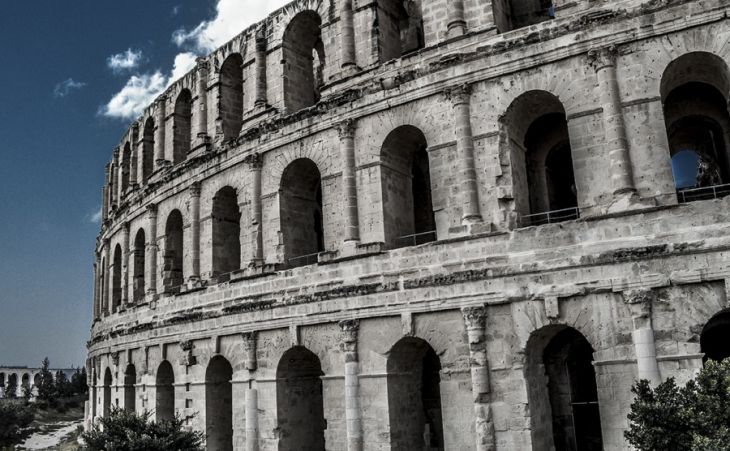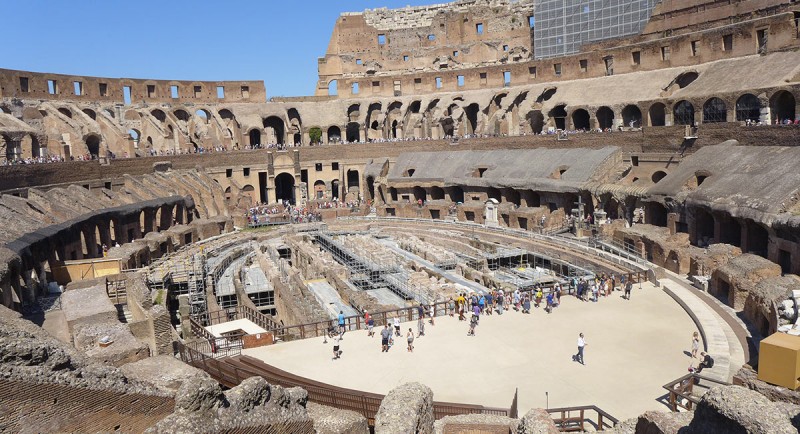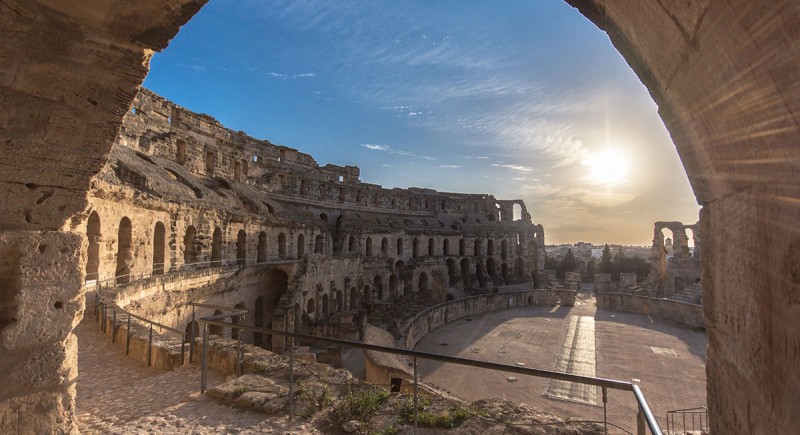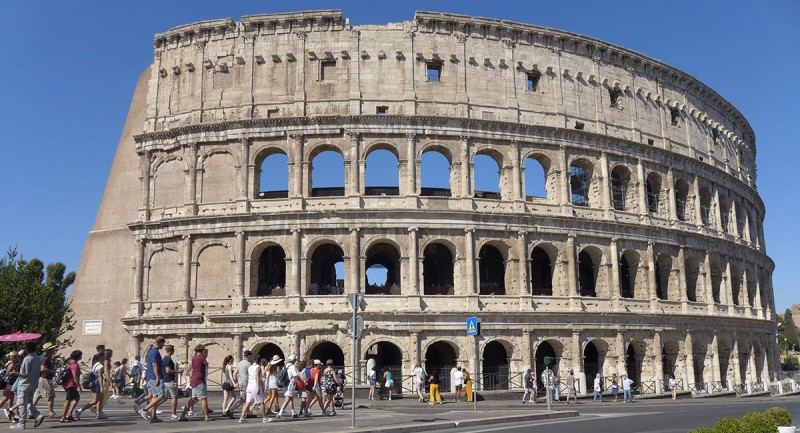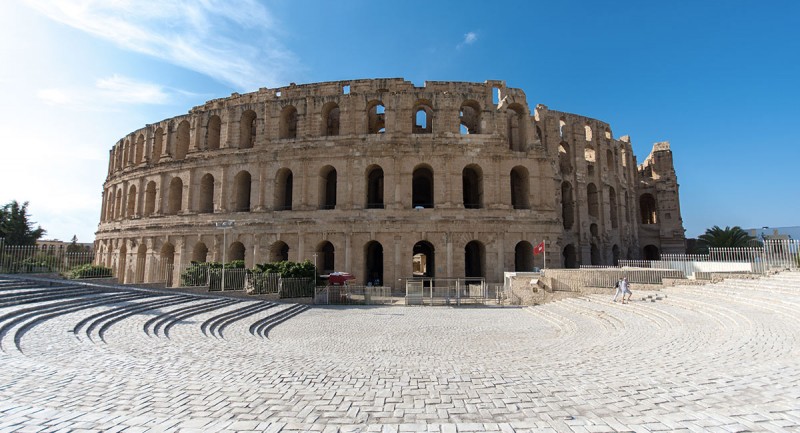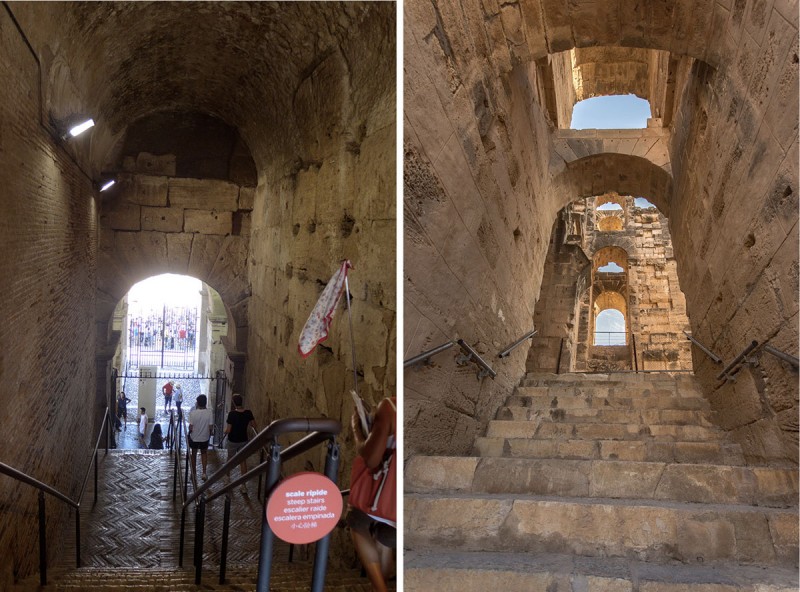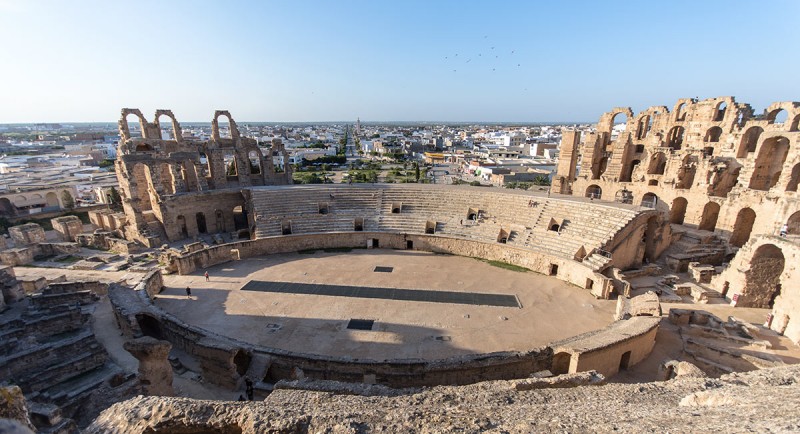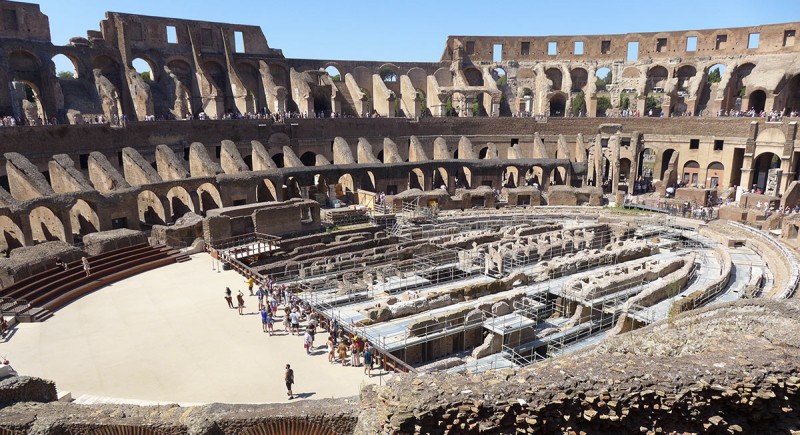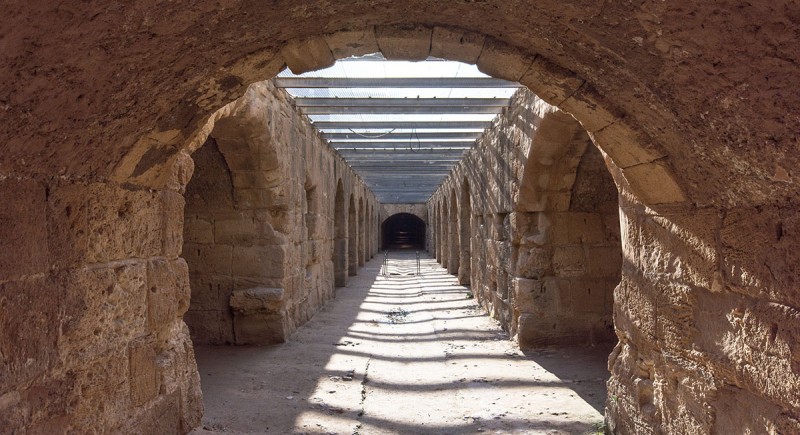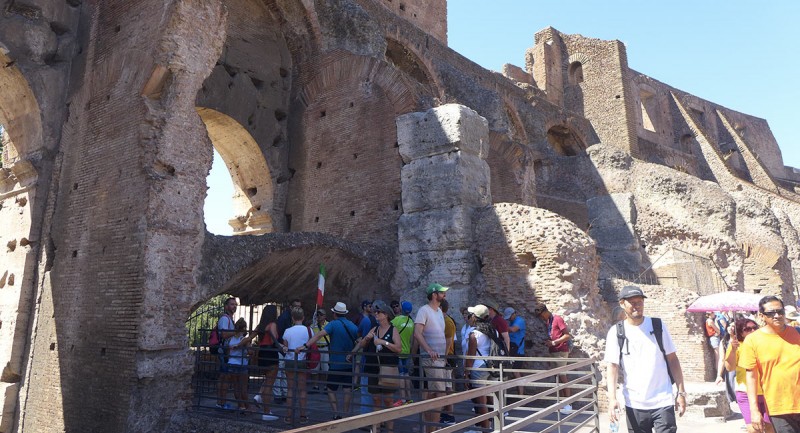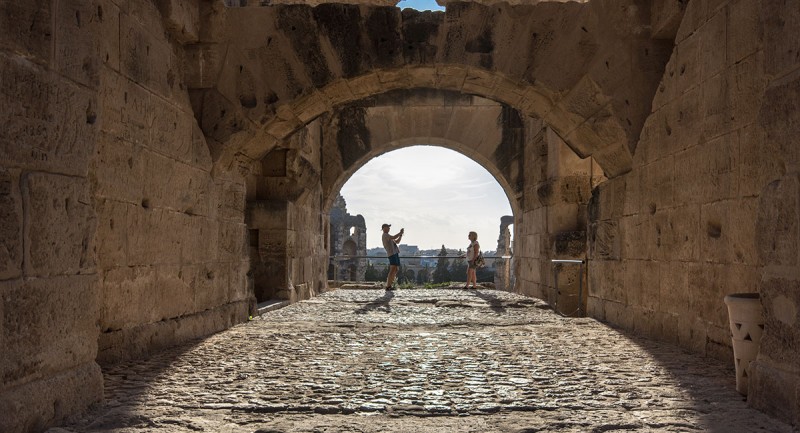Rome and Tunisia have the two greatest ancient amphitheaters in the world. Is one more worth visiting over the other?
The Colosseum of El Jem has been declared a UNESCO World Heritage Site forty years ago (in 1979) which is… one year before the historical center of Rome, where the Colosseum is situated.
The two amphitheaters have a lot in common. They are among the largest in the world, and thanks to their excellent state of preservation, both allow us to imagine the famous circus games that brought great excitement to the Roman people across the whole empire.
A comparison…
Rome (top) and El Jem (bottom): the interior
Roman architecture wonders
Both Colosseums are entirely built above the ground, whereas most of Roman amphitheaters were dug in a hill.
The Colosseum of Rome is by far the largest: it could host 50,000 spectators (30,000 for El Jem’s).
Both still have a large part of their enclosure. For Rome’s Colosseum, the collapsed part is due to earthquakes. El Jem, on the opposite, has been shelled in order to dislodge rebel tribes.
Rome’s Colosseum is built of hard stone (outside) and bricks (inside). It has wide openings and a different style of decoration at each level.
At the opposite, El Jem’s is the only one in the world entirely built of cut stone.
But the stone of El Jem was more brittle and weak; so the architects favored thick walls and narrow openings. The façade is soberly decorated, raising up the beauty of the centuries-old golden stone.
Rome (top) and El Jem (bottom): the façade
Galleries and arena
The interior of Rome’s Colosseum is entirely built of bricks. Whereas in El Jem, we can circulate through stone vaults and galleries where the poetic atmosphere is unique.
Rome (left) and El Jem (right): galleries and stairways
Under the arena, both amphitheaters had a real maze of corridors, underground chambers for gladiators and wild beasts cages, machines and elevators in order to raise animals, equipment and sceneries for the various shows.
In Rome, the Colosseum’s arena is missing; it was a wood floor covered with sand. On the other hand, in El Jem the arena is intact: corridors and service rooms were dug underground and can still be visited.
Rome (top) and El Jem (bottom): arena and grandstands
Built in the 3rd century, two centuries after Rome’s Colosseum, El Jem’s amphitheater is better designed and more elaborate: less blind spots, more fluid access, basements better arranged…
In Rome, the amphitheater was sometimes filled with water in order to showcase naval battles. But in El Jem, because of the lack of water, such shows were not organized. On the contrary, the amphitheater was arranged to collect rainwater and store it in tanks.
Rome (top) and El Jem (bottom): the souterrains
For the pleasure of visiting
Finally, one last difference: the Colosseum in Rome is the most visited monument in Italy and received 7 million visitors in 2017. With only two levels open to visit, it is steadily overcrowded.
On the contrary, El Jem’s has few visitors: 133,000 in 2017. In addition, we can explore it with complete freedom from the basements to the upper floors and from the arena to the stands… An incredibly charming visit!
It should be added that the entrance fee tilts the balance in favour of El Jem: 10 dinars entrance fee (3 euros) compared to 10 euros in Rome.
Thus, even if the Colosseum of Rome is famous worldwide, its counterpart in El Jem largely compares favourably.
Rome (top) and El Jem (bottom): visitors
